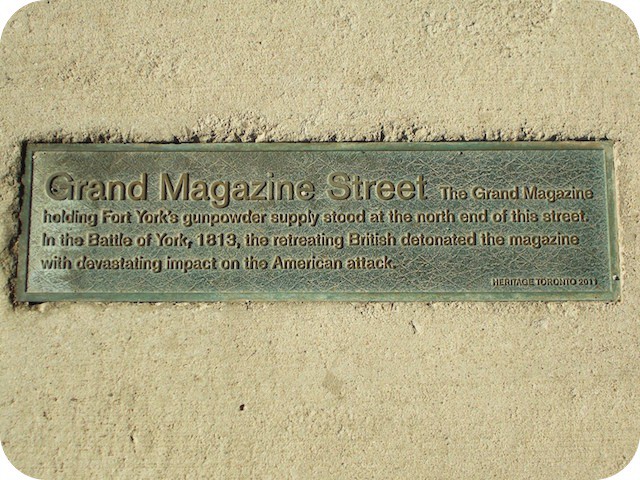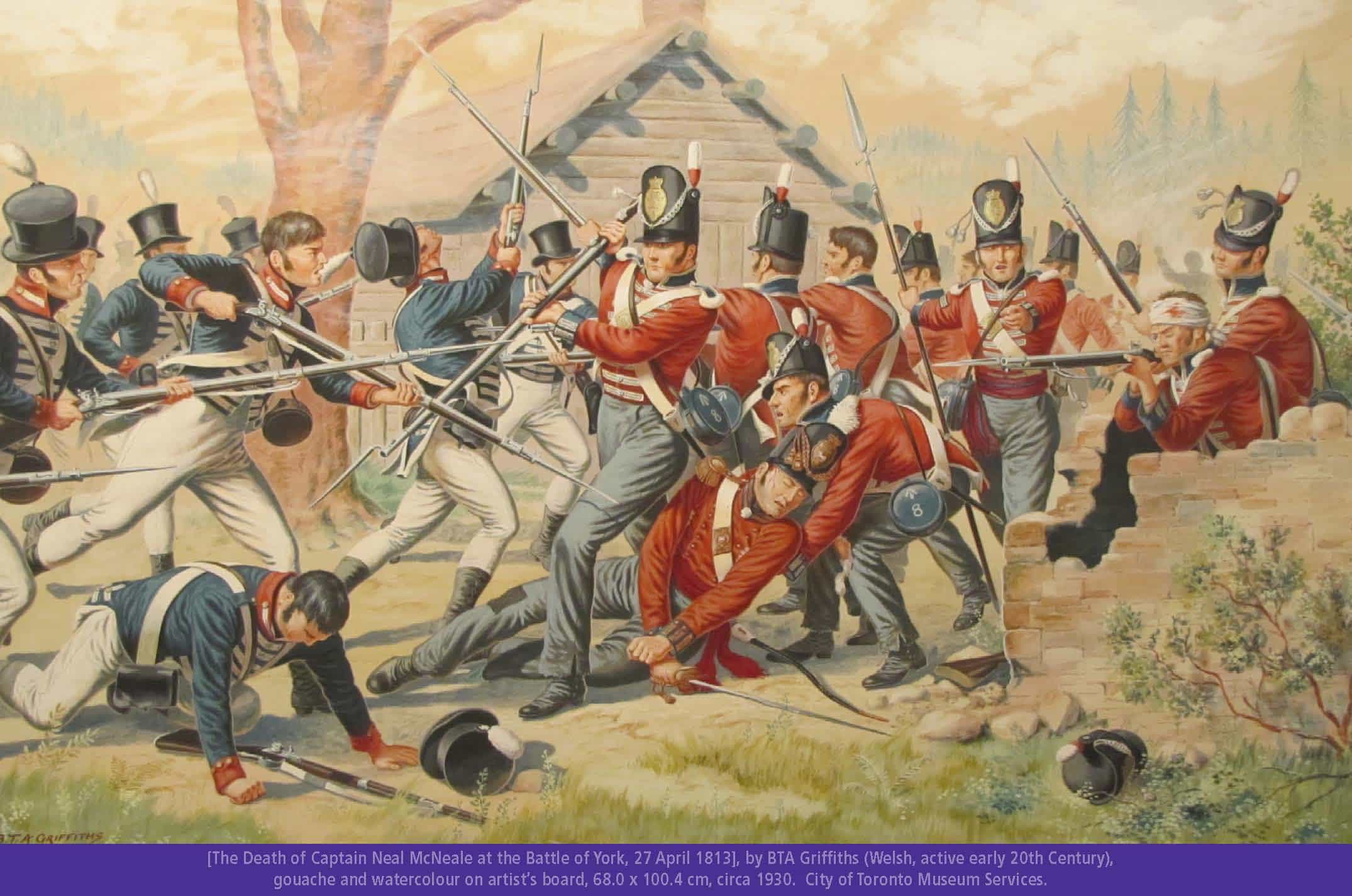On this day (April 27) in 1813, Toronto (then known as York) was captured by foreign invaders from the south.
An American force of around 1,800, supported by a naval flotilla, landed on the lake shore to the west and advanced against the town, which was defended by an outnumbered force of regulars, militia and Ojibway fighters under the overall command of Major General Roger Hale Sheaffe, the Lieutenant Governor of Upper Canada.
No long after the fighting began, Sheaffe looked along the lines of his men and knew that he had to act. His men were vastly outnumbered, and after six hours of fighting it became clear that the British were not going to win this battle. Sheaffe called to his men and gave the order to retreat to the east, but to give the American’s a parting gift—an explosion. He ordered the gunpowder magazine at Fort York to be ignited.
The sky turned black with the resulting explosion. Huge chunks of masonry, horses, and men came raining down on the advancing American forces. Men were crushed by falling debris to be buried where they fell (resurfacing later when the ground came to thaw). The retreating British burnt the bridge over the Don River and left the town of York to its fate as they retreated towards Kingston.
And boy, were the Americans mad. They were infuriated that their men had been killed in the blast, and even more so because they had thought that the British had surrendered before they blew up Fort York (which was just bad form). It was also taking ages for the local York town leaders to ratify the terms of surrender. American solders slipped into York and began to wreak havoc.
They flowed through the town looting homes and businesses, they smashed the local printing press. They took over the dockyards and captured ships. American soldiers and sailors made their way to the Legislative Assembly of Upper Canada (located at present day Parliament Street and Mill Street – not far from where our Spirits of the Distillery District Ghost Tour begins) where they stole the Mace and mistook the Speaker’s Wig to be a scalp. The Mace was eventually returned to Canada by President F.D. Roosevelt in 1934 as a gesture of goodwill.
They made to pillage and burn Saint James Cathedral, but were stopped by Reverend John Strachan who, with his long black cloak billowing behind him, came riding up the steps of the Cathedral on his black horse. He then bellowed out a sermon so moving, that the Americans backed away from the sacred building. Strachan became a hero, even though his Cathedral was subsequently burnt down twice in his lifetime.
The Americans eventually left York on May 8th, leaving behind a smoldering town with burgeoning anti-American sentiment and a reason to fight back.


